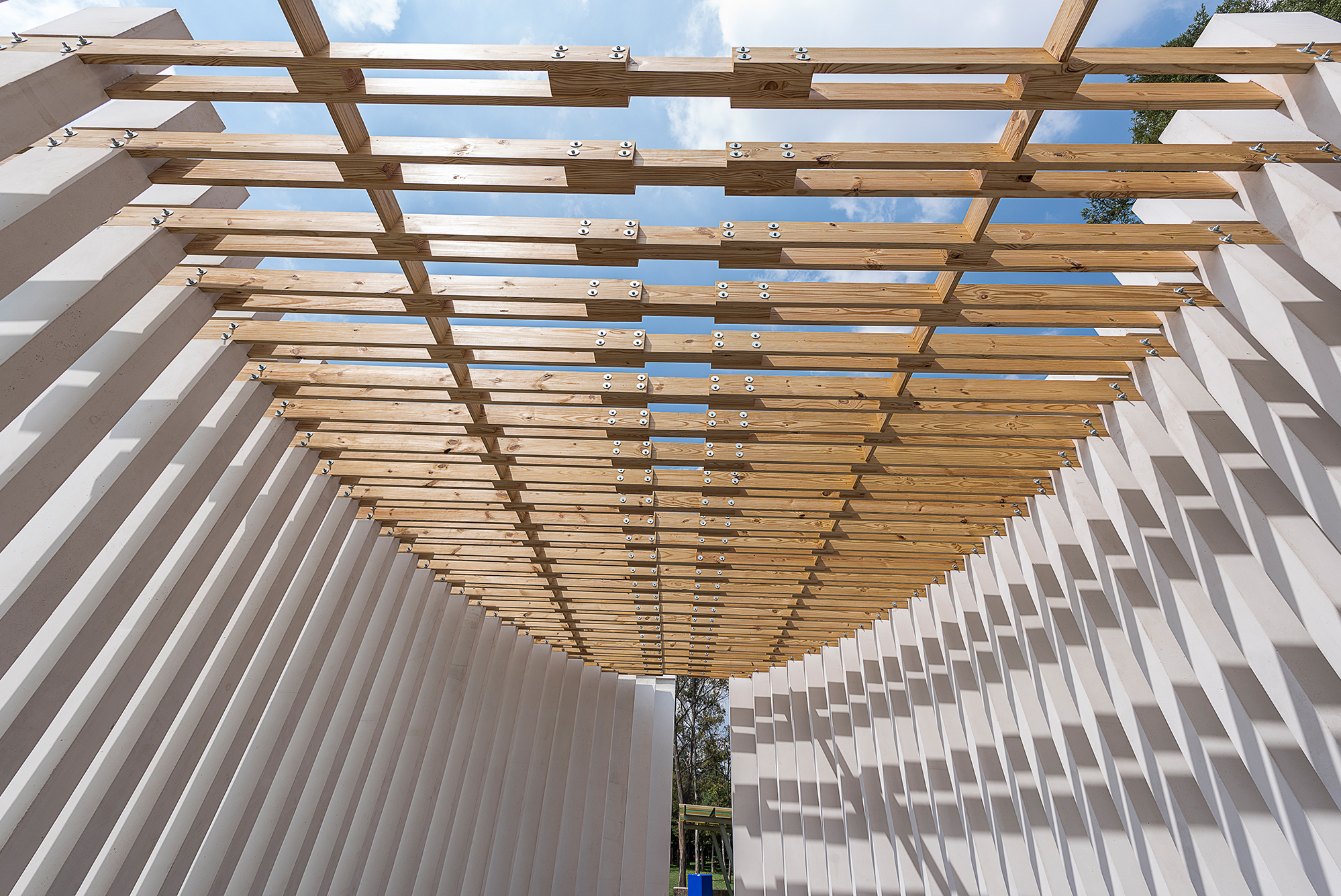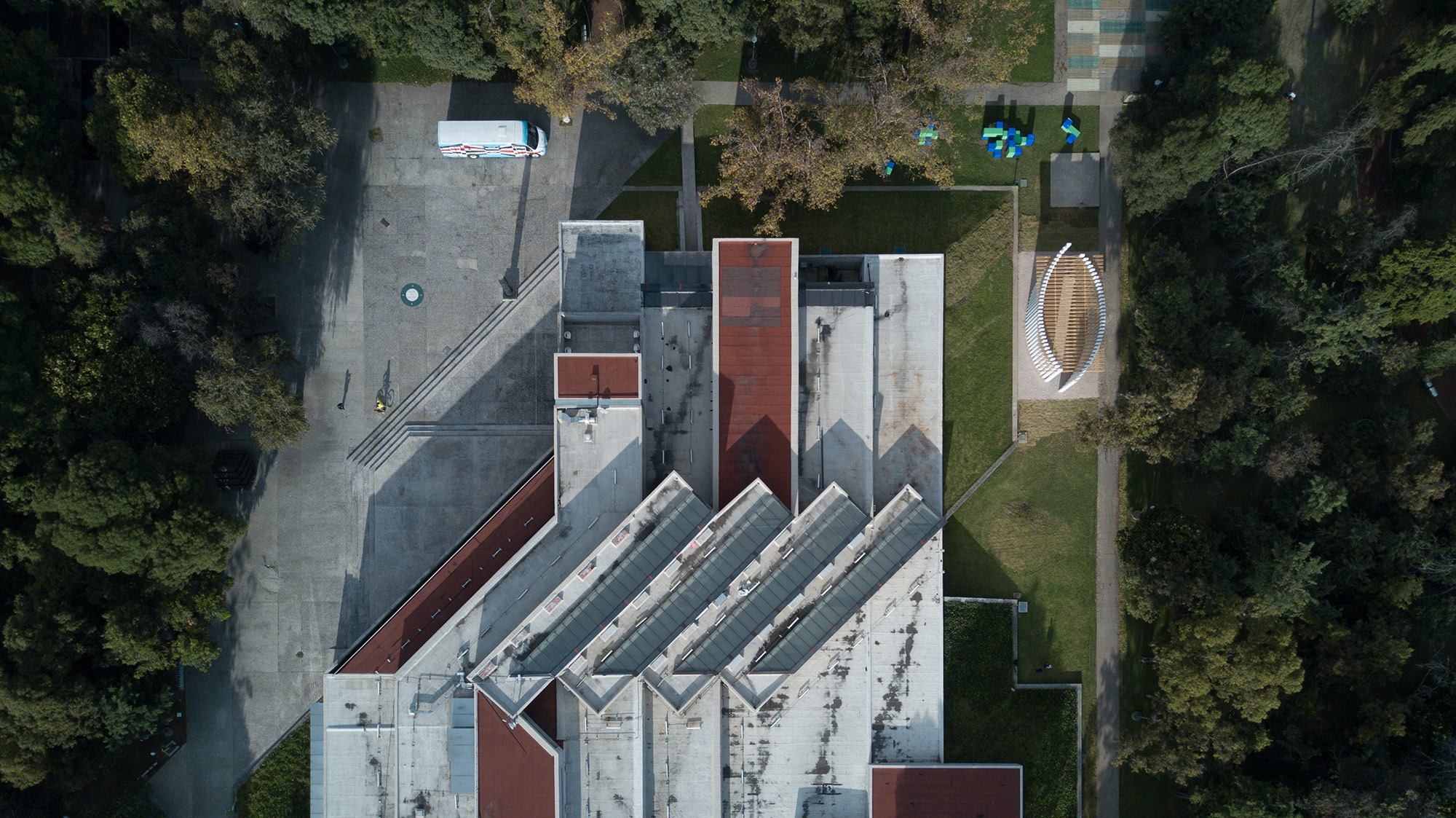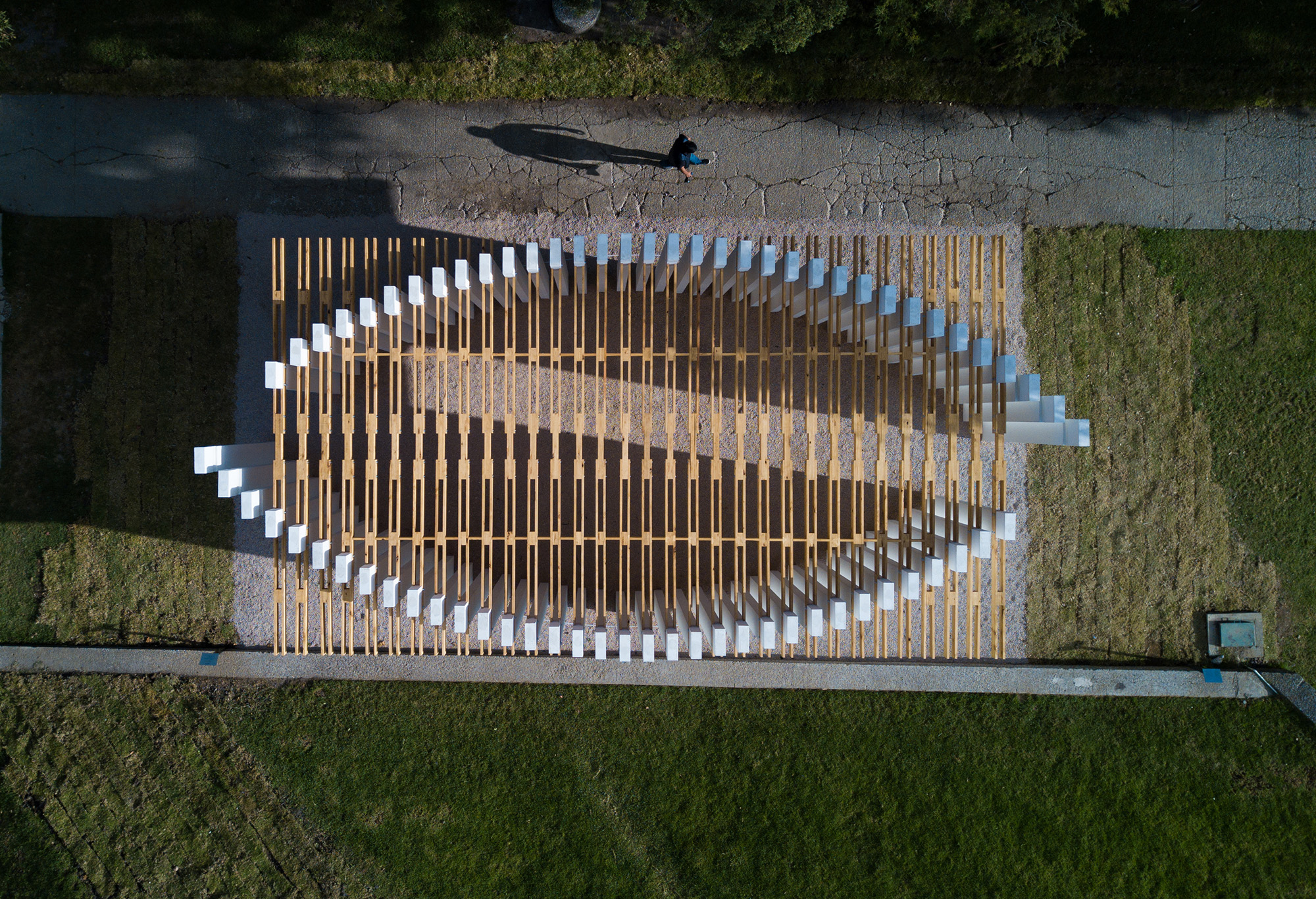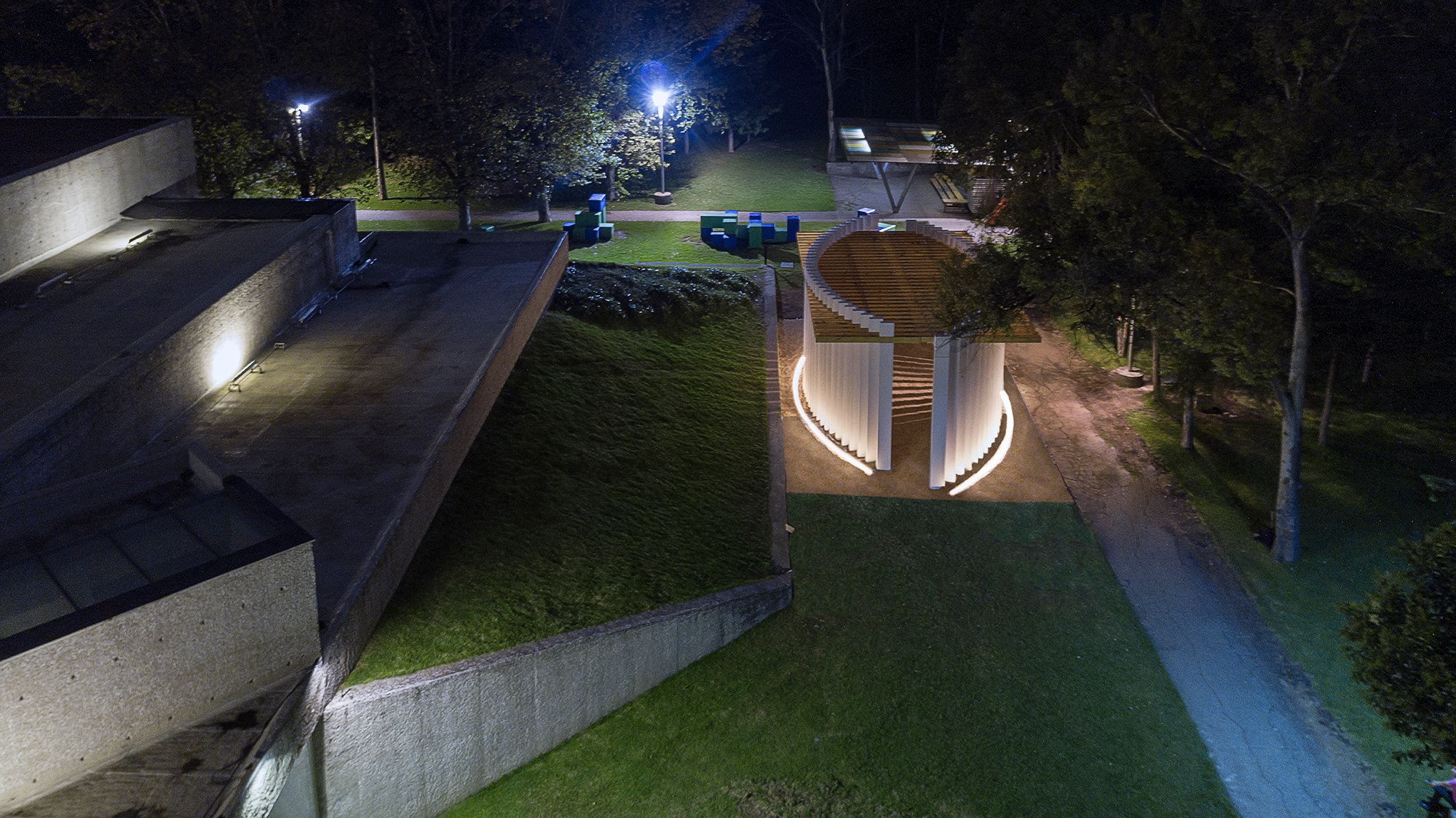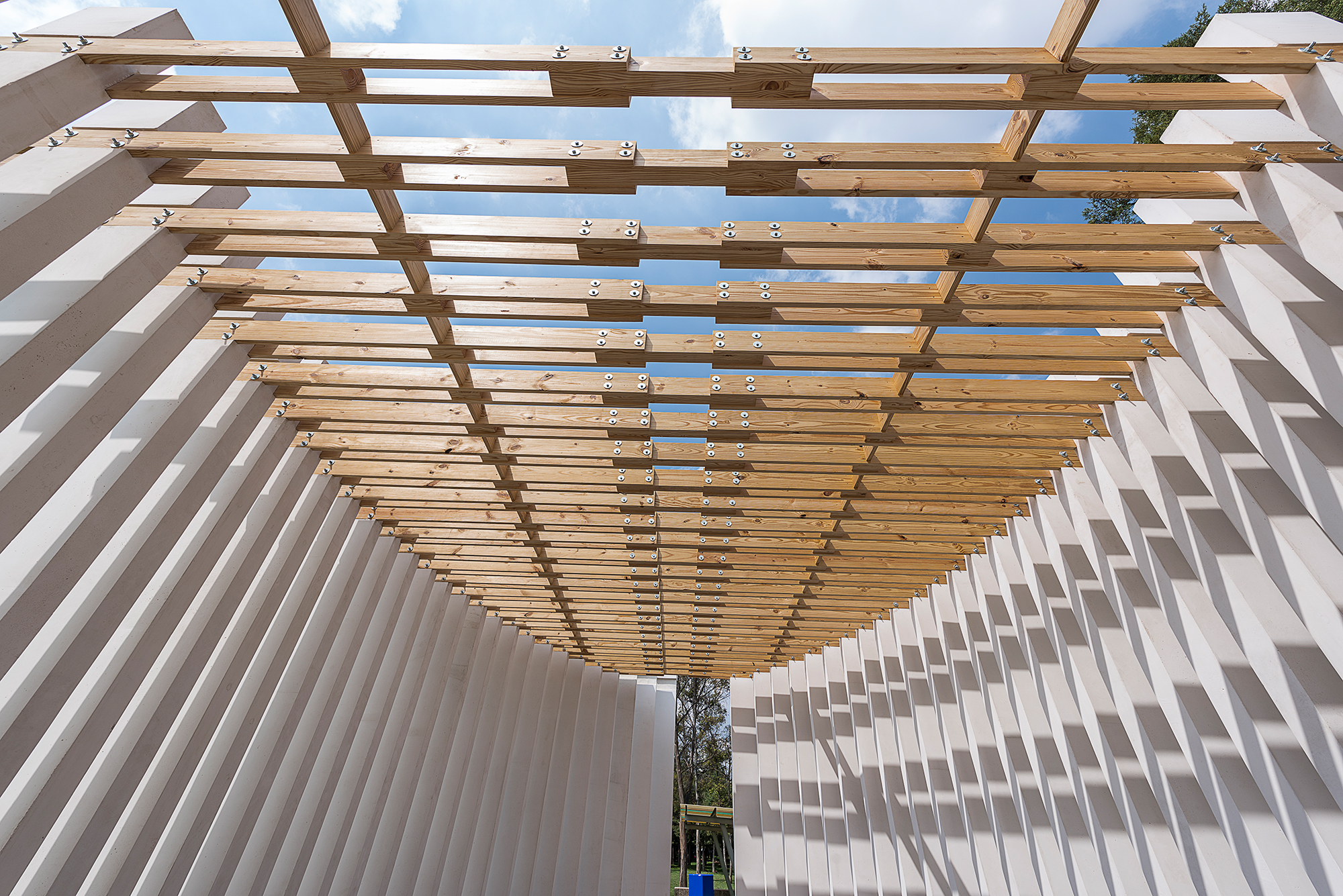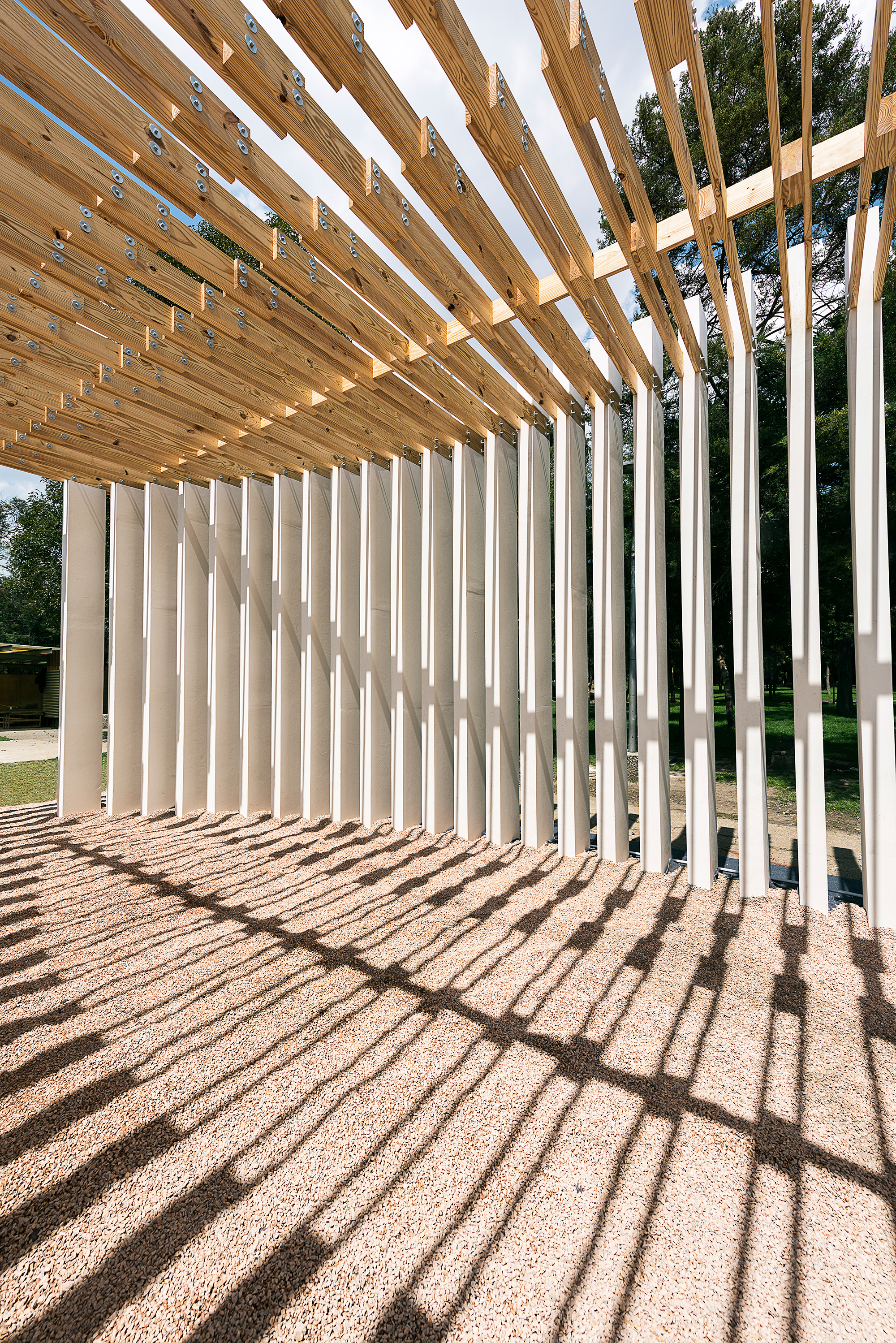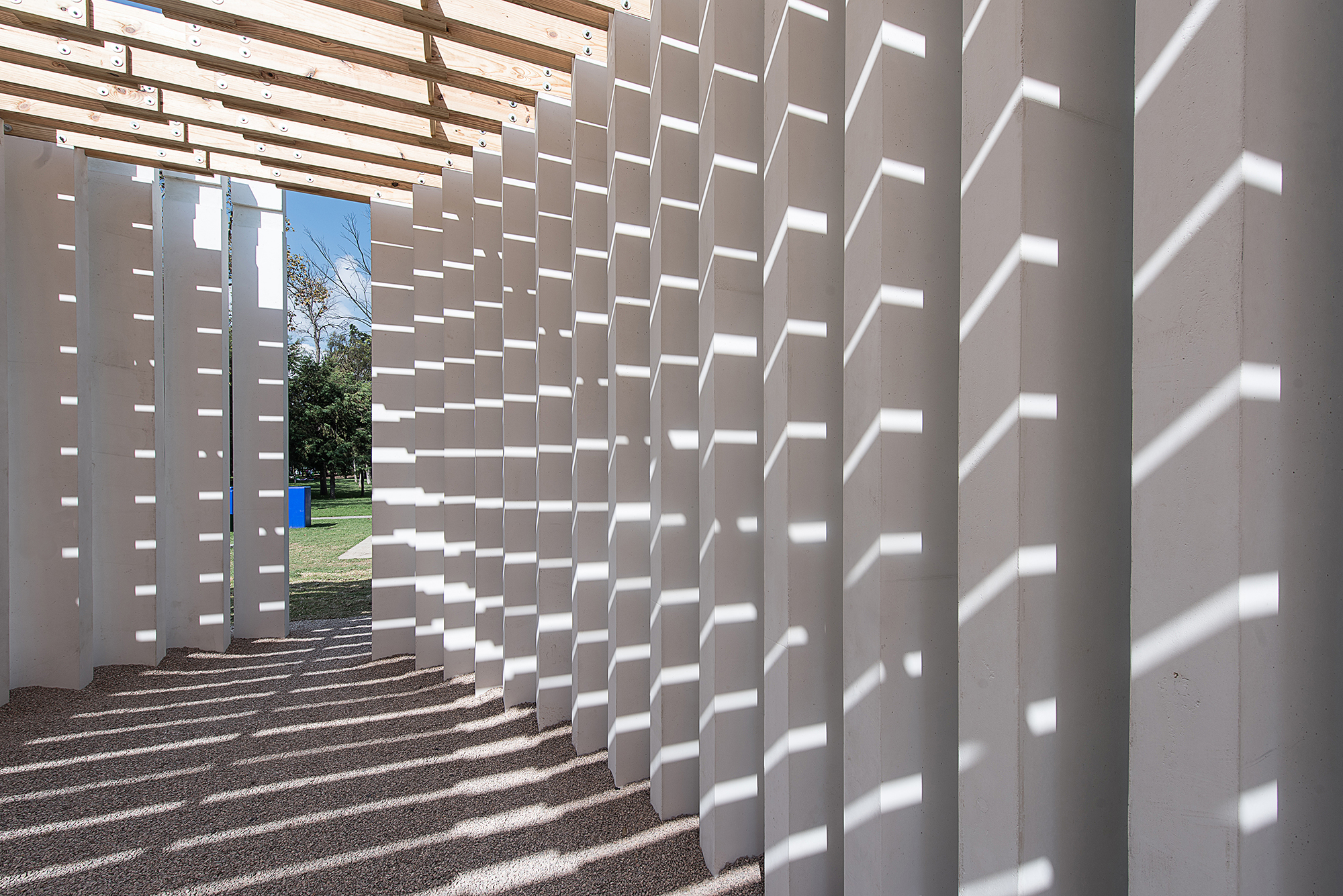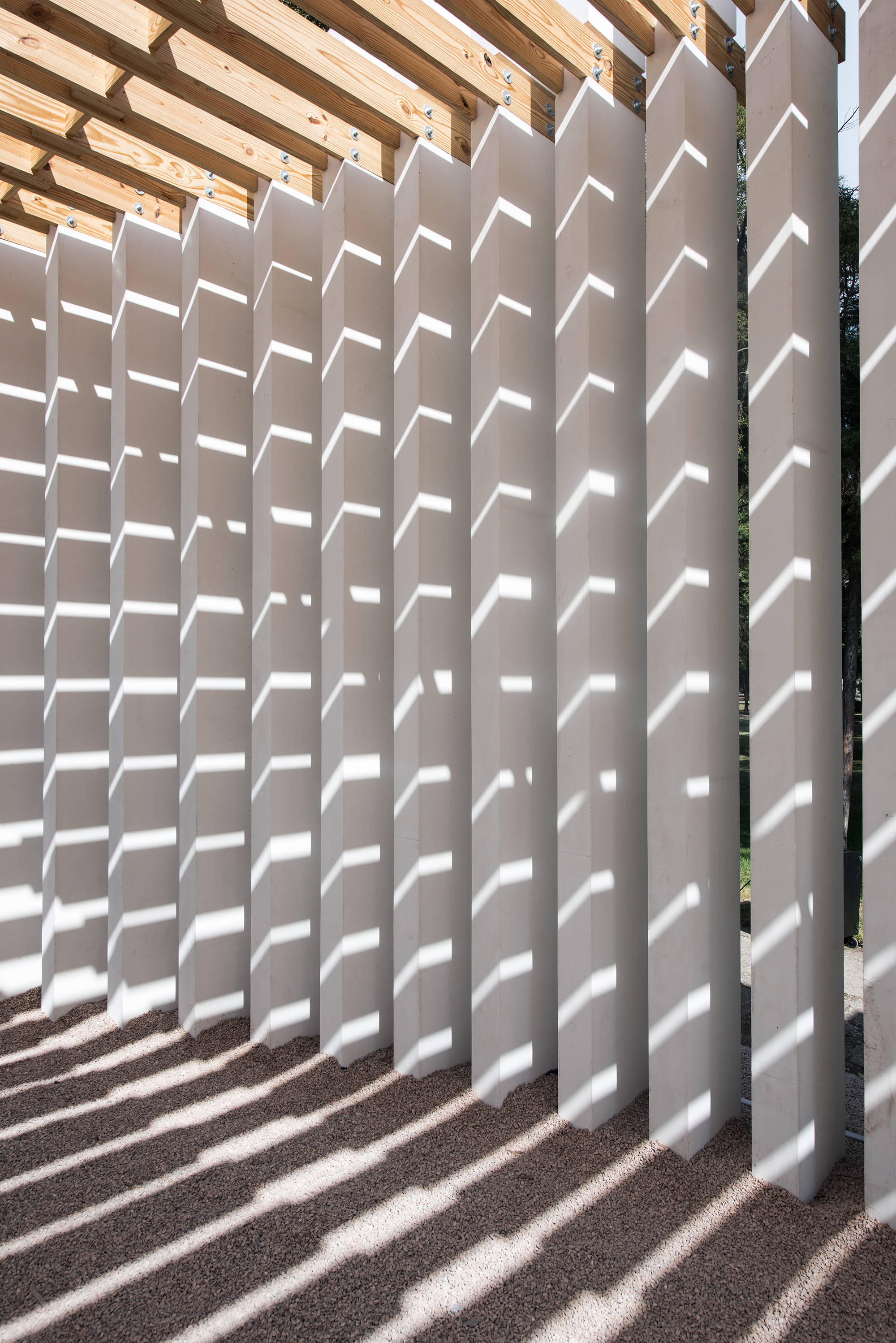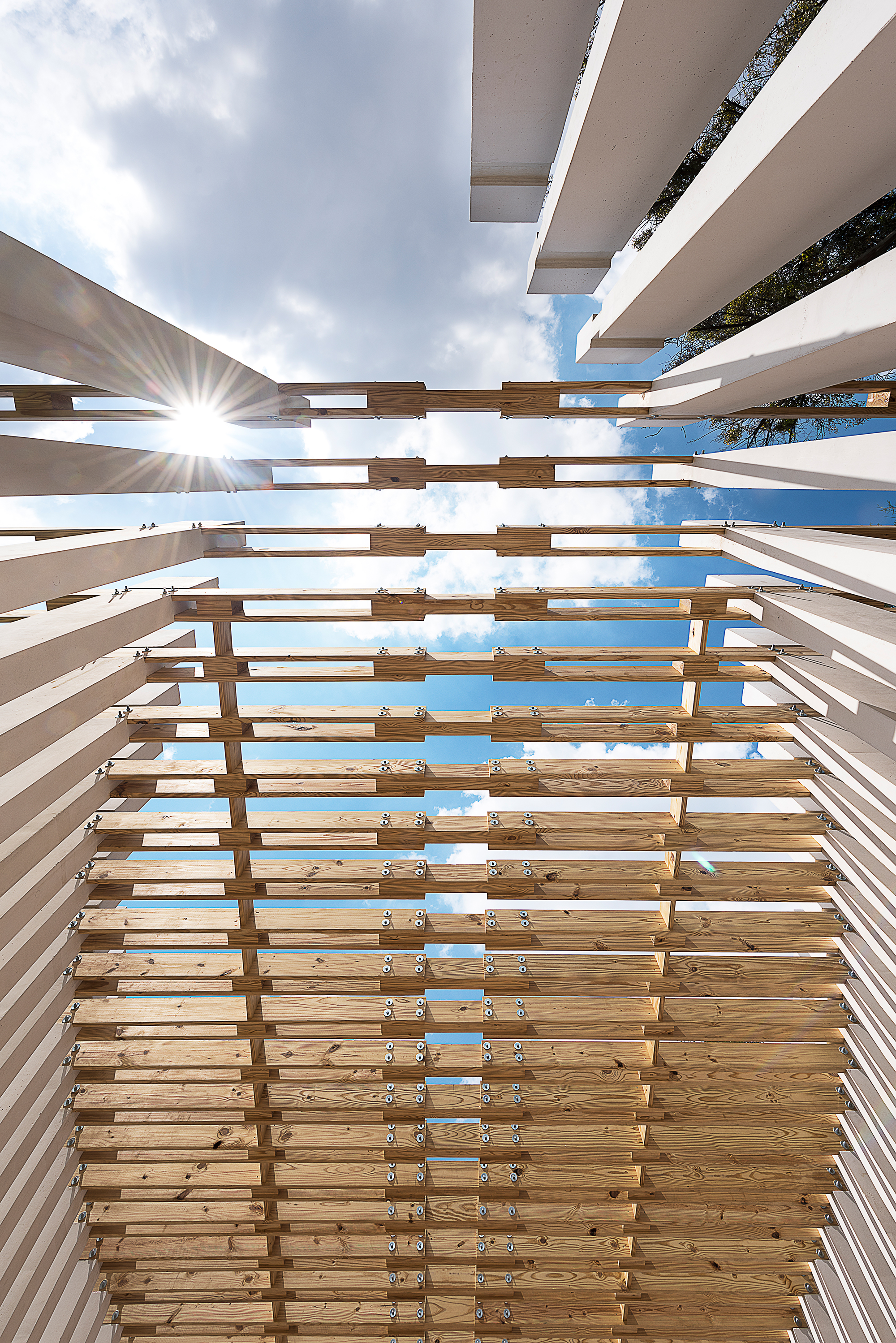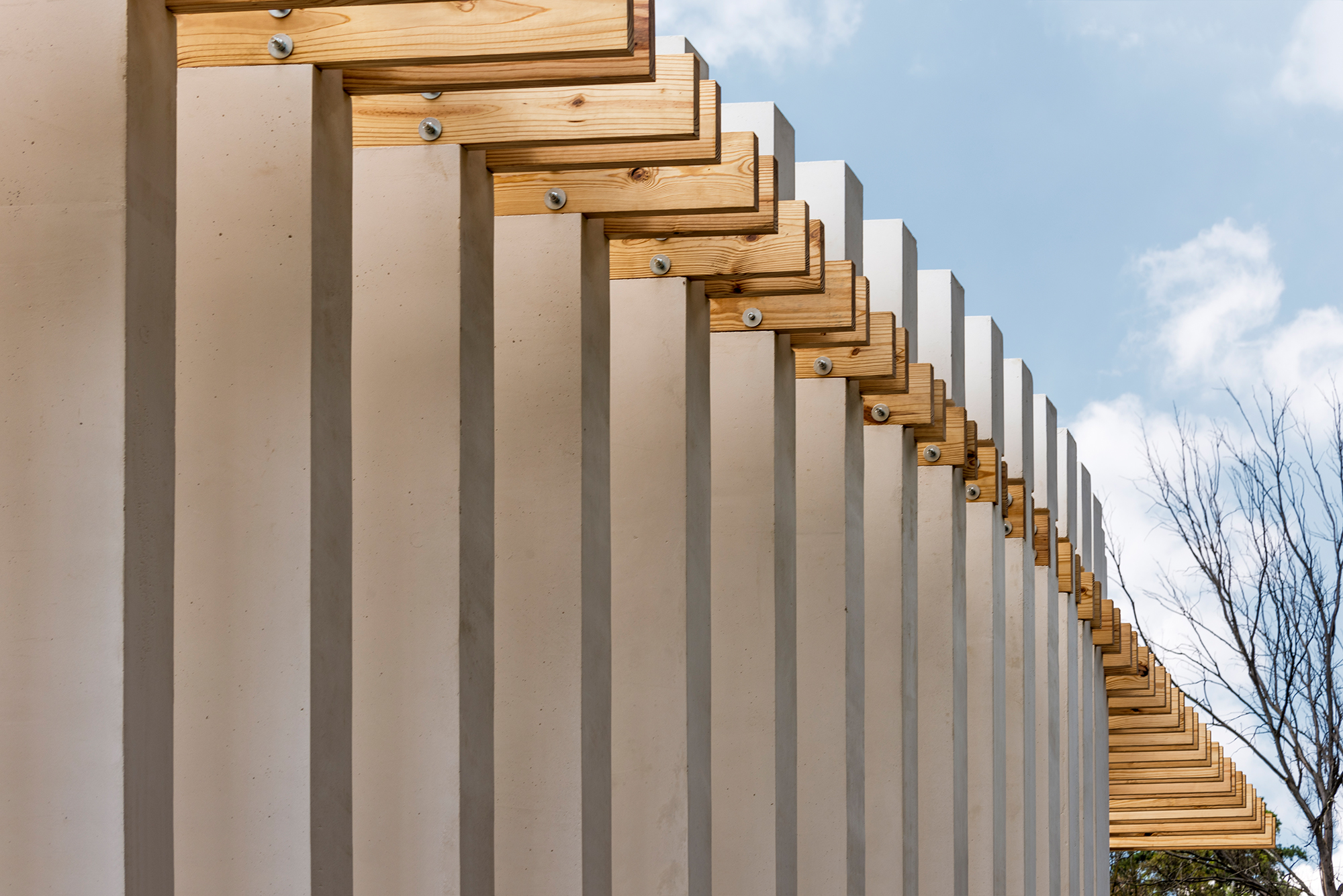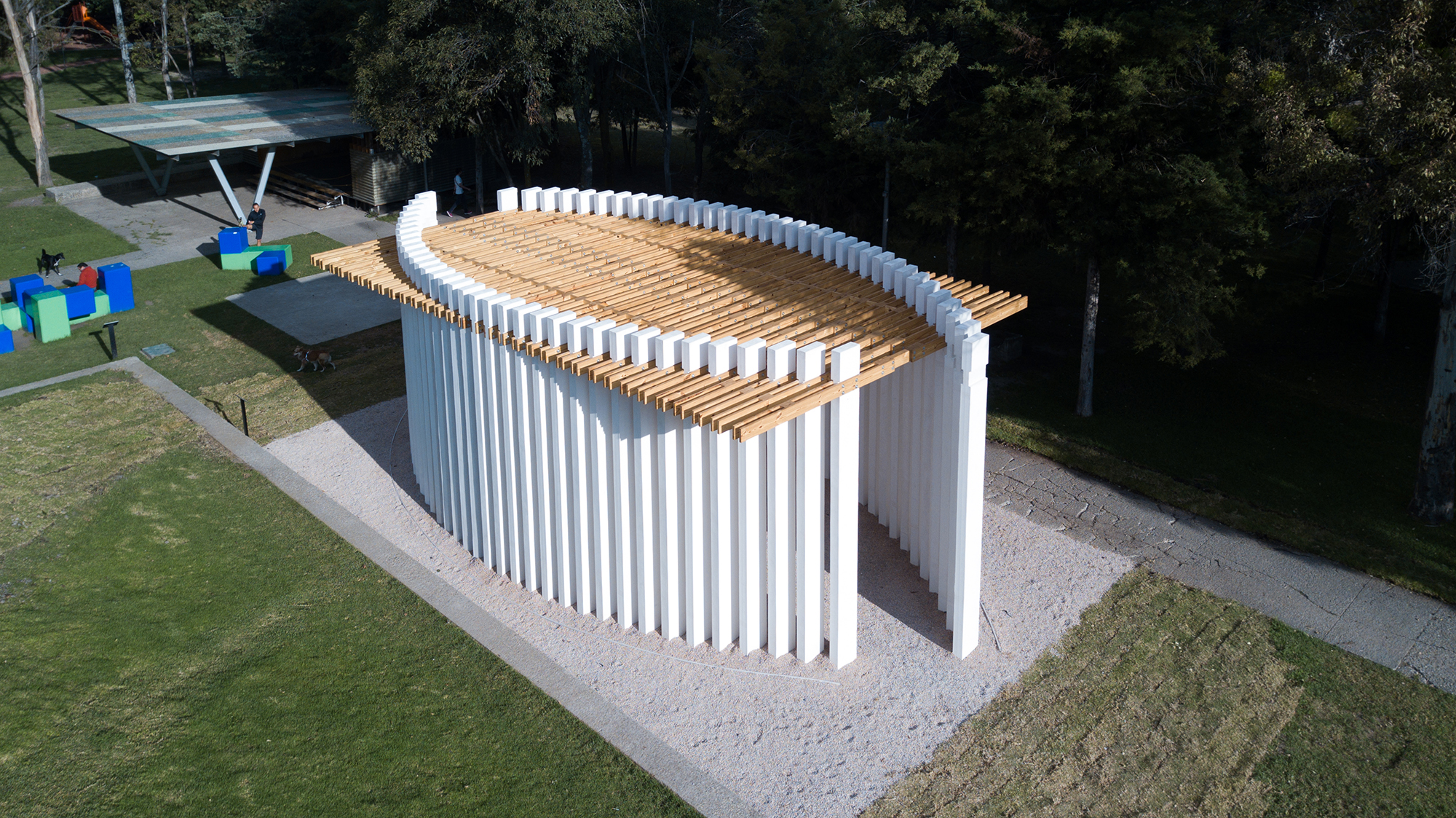Perception Machine: Pavilion in Mexico City

Foto: Jaime Navarro
Parteluz, which literally means light-splitter, is the Spanish word for the mullion of a multipartite window or the middle column of a church portal. The eponymous pavilion was designed by the Materia architecture studio for Design Week Mexico, which last took place in the autumn of 2017. The location for the installation was the outdoor grounds of the Museo Rufino Tamayo in Mexico City’s Chapultepec Park.
Altogether 70 parteluces, arranged in two opposing and offset arcs, surround the central space of the pavilion. They are close enough to each other to allow visitors to look directly through them at close proximity. Oblique looks transform them into a closed surface. The square columns, which are 4.80 m high, are screwed onto a foundation ring via steel footplates. Pairs of pinewood joists have been screwed into notches just under the tops of the columns. Further wooden struts installed lengthways connect the joists to what hints at a flat roof.
The heavy concrete columns refer to the massive character and simple cubic shapes of traditional Mexican architecture. The architects see the delicate-looking wood construction as a tribute to Mexican artisanship.
However, their pavilion is above all an effective perception machine. Depending on the angle of view, the angle of the sun and where visitors stand, constantly changing plays of light and shadow, as well as views of the adjacent park, are created inside the structure.
Altogether 70 parteluces, arranged in two opposing and offset arcs, surround the central space of the pavilion. They are close enough to each other to allow visitors to look directly through them at close proximity. Oblique looks transform them into a closed surface. The square columns, which are 4.80 m high, are screwed onto a foundation ring via steel footplates. Pairs of pinewood joists have been screwed into notches just under the tops of the columns. Further wooden struts installed lengthways connect the joists to what hints at a flat roof.
The heavy concrete columns refer to the massive character and simple cubic shapes of traditional Mexican architecture. The architects see the delicate-looking wood construction as a tribute to Mexican artisanship.
However, their pavilion is above all an effective perception machine. Depending on the angle of view, the angle of the sun and where visitors stand, constantly changing plays of light and shadow, as well as views of the adjacent park, are created inside the structure.
